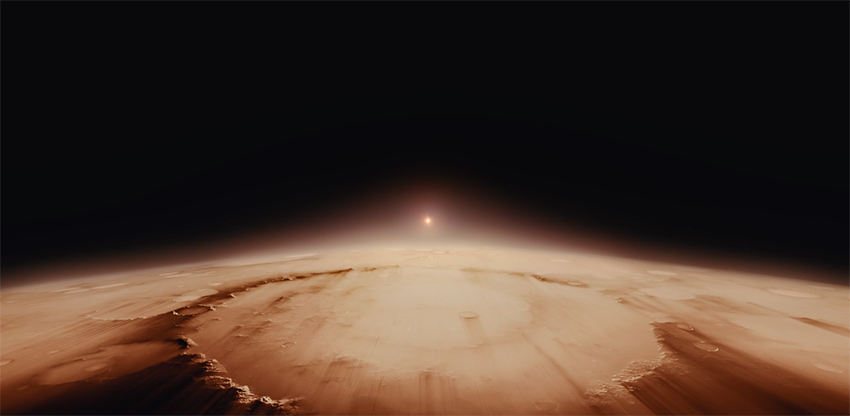A blanket of silence settles over the theater during the title cards of “Voyage of Time: The IMAX Experience.” A few moments later, it’s shattered by an explosion of color and sound.
In his first documentary, director Terrence Malick guides audiences through an exploration of the history of the universe, from the Big Bang to the state of modern humanity and beyond. He doesn’t present any new insights in this treatment of familiar cosmic themes, but his visuals consistently mesmerize throughout. Audiences should note that “The IMAX Experience” is a truncated version of the complete 90-minute feature, which is shot on 35mm rather than the IMAX format. The film blends ideas from ancient astronomy, geology and anthropology with big questions about the nature and purpose of life in a manner accessible to all audiences.
But this accessibility comes at a price, as the film fails to break any new ground in its attempts to draw greater meaning from its events. Malick follows in the footsteps of Carl Sagan’s “Cosmos” and other like-minded productions when he claims that humanity has a spiritual connection with all other parts of the universe. He even recalls Christopher Nolan’s “Interstellar” in a discussion of the role of love in the animal kingdom. “The IMAX Experience” does deliver occasional moments of real profundity, including a reflection on the fact that humanity is the first-known branch of nature to become aware of itself.
These ideas are communicated in the form of husky, half-whispered, awe-filled narration by Malick’s longtime collaborator Brad Pitt. Many elements of the film are reminiscent of Pitt’s previous work with Malick in “Tree of Life,” a film also known for poetic visions of celestial bodies and eye-popping nature photography.
Malick’s visuals are undeniably strong. Audiences will be consistently gobsmacked by the aching beauty presented onscreen. Images of the cosmos are often difficult to interpret, and the information Pitt provides is kept intentionally vague. This contributes to an atmosphere of mystique, and the sensation that audiences are witnessing something larger than themselves. Footage of nature and wildlife on Earth is much more intelligible by comparison, and arguably more gorgeous as well. Some depictions of aquatic life in particular are so close up and possess such impossible clarity and detail that audiences may question if they are looking at futuristic CGI.
The special effects work is excellent throughout most of the film, especially in regards to portrayals of cosmic events. However, a few scenes describing the evolution of life on Earth feature sub-par computer animation. The long-extinct animals rendered here are not greatly improved from those in “Jurassic Park” more than a decade ago.
“The IMAX Experience” makes full use of its format, not only through visuals, but also through sound design and music. Audiences will be treated to a vast range of high-fidelity sound, from the distant rumble of celestial activity to the quiet gurgling of a gentle stream. The music is at times as abstract and impressionistic as the visuals. Malick employs a wide range of musical styles, from the solemn wonder of a church choir to the bombastic grandeur of a classical orchestra.
At a scant 45 minutes long, “Voyage of Time: The IMAX Experience” fails to explore the questions it raises or emotionally engage its audience to the fullest extent. However, fans of Malick and film lovers will still find this wondrous audiovisual journey worth the price of admission.
“Voyage of Time: The IMAX Experience”
- Rating: G
- Runtime: 45 minutes
- Score: 3/5 stars












